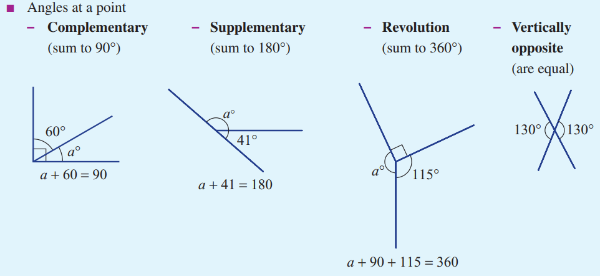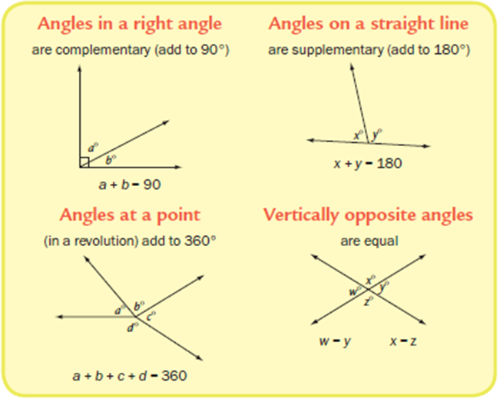Angles at a Point Review
Angles at a point occur when two or more angles share a common point or vertex.
Complementary Angles
Complementary Angles are adjacent angles that have a sum to 90. Use the two animations below to see Complementary angles in action! Notice that the two Complementary Angles always add to 90. If the marking for the 90 is too distracting (in the first animation), you can remove it to make it easier to see the two complementary angles.
Supplementary Angles
Supplementary angles are formed when two or more angles are combined so they combine to form a 180 angle. Use the two interactive animations below to help you visualize Supplementary Angles
Revolution Angles
In revolution angles, two or more angles combine to form a complete 360 revolution. Observe the animation below to help you visualize a revolution angle. If you adjust the "" slider is too large of an angle, it will start to break the animation a little bit, so be careful.
Vertically Opposite Angles
When two lines or rays intersect, Vertically Opposite Angles are formed. The opposite angles are equal in these situations. Use the two interactive animations below to help you visualize Vertically Opposite Angles.
Overall summary

